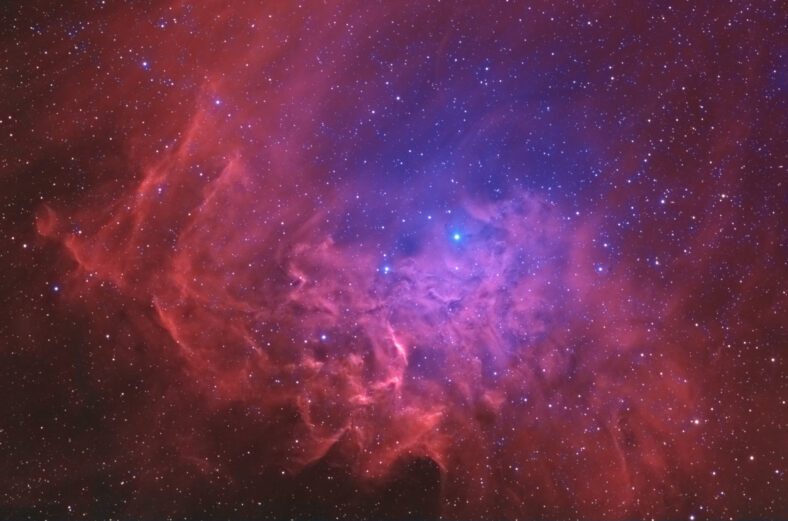The James Webb Space Telescope Helped Take A Peek Inside A Mysterious Flame Nebula

A team of researchers are using the James Webb Space Telescope (JWST) to study the Flame Nebula, which is a hotbed of stars less than a million years old.
It is located about 1,400 light-years away from Earth. By examining the Flame Nebula, they are hoping to find the smallest celestial body that can form from gas and dust in space.
There are objects so small within the Flame Nebula that their cores will never be able to fuse hydrogen like brown dwarf stars. Over time, brown dwarfs become dimmer and much cooler than full-fledged stars.
This makes it difficult to observe brown dwarfs with most telescopes, even if they’re only a short distance from the sun. They are easier to see when they are young because they are still relatively bright and warm.
JWST can see through the dense, dusty region of the Flame Nebula and detect the faint glow that comes from young brown dwarfs.
The research team used it to explore the lowest mass of brown dwarfs within the Flame Nebula. They found free-floating objects approximately two to three times the mass of Jupiter.
“The goal of this project was to explore the fundamental low-mass limit of the star and brown dwarf formation process. With Webb, we’re able to probe the faintest and lowest mass objects,” said Matthew De Furio, the lead author of the study.
The team thinks the low mass of celestial objects is due to a process called fragmentation. Stars and brown dwarfs are both born from large molecular clouds, which break apart into smaller fragments.
Fragmentation depends on several factors, such as temperature, thermal pressure, and gravity. As the force of gravity causes fragments to contract, their cores heat up. A core will begin to fuse hydrogen if it is massive enough.

Sign up for Chip Chick’s newsletter and get stories like this delivered to your inbox.
The fusion creates external pressure that counteracts gravity, preventing the object from collapsing and stabilizing it, resulting in what is known as a star.
However, fragments with cores that are not compact and hot enough to burn hydrogen will continue to contract until they completely expel their internal heat.
When a fragment becomes opaque enough to reabsorb its own radiation, fragmentation will cease. The lower-mass limit of these fragments is thought to be between one and 10 Jupiter masses. The new study significantly narrows that range.
“We find fewer five-Jupiter-mass objects than 10-Jupiter-mass objects, and we find way fewer three-Jupiter-mass objects than five-Jupiter-mass objects,” said De Furio.
“We don’t really find any objects below two or three Jupiter masses, and we expect to see them if they are there.”
The team concluded that there should not be any one-Jupiter-mass objects free-floating in the Milky Way, unless they were formed as planets and ejected out of another planetary system. They will continue to explore the Flame Nebula, using JWST to identify its different objects.
The study was published in The Astrophysical Journal Letters.
More About:News